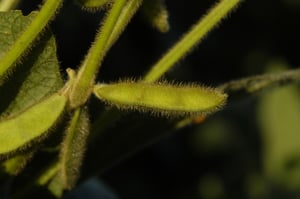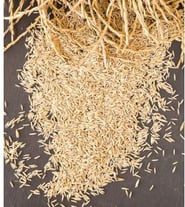An extraordinary transformation is quietly taking place among row crop growers in the US. The change relates to the most elementary input for farming: soil. Adopting a position of less is more, even large growers like Del Ficke in Nebraska adopted regenerative farming principles like not tilling soil at all. Farmers and farmland owners are more concerned about soil health than ever.
If you have soil that is worn down due to overuse from chemical fertilizers or lack of crop diversity, there are a number of measures you can take to restore your soil, develop resistance to pests and increase the variety of your crop offerings. For those interested in obtaining a deeper understanding of the interconnection between soil and personal health, there is, fortunately, a growing body of research available.
Soil management is essential for crop health
Soil health is comprised of several core objectives, including:
- Increasing the health and quality of topsoil.
- Decreasing water runoff while capturing and storing more water for crop use.
- Increasing crop and biodiversity.
- Increasing the resiliency of soil after a severe climate event.
Promoting sound soil management practice is an integral factor for long-term improvement in crop yield, quality and farm income. One example of a regenerative practice is cover crops. Cover crops are nitrogen fixers (for crops to access), and they reduce pest infestation. Additionally, well-aerated soil ensures that balance can occur in soils with air and water being available to crops. Reducing erosion, maximizing water infiltration and maintaining the proper balance of nutrients in the soil are all elements to manage and improve over time.
Soil management may promote safer nutrients that improve human health
Over time, scientists are linking soil diversity and nutrient support with the human gut biome. Microbial diversity in the gut relates to the way the microbes are transported from various transmission mechanisms like food and water. Taken a step further, many scientists postulate that link between microbial diversity and disease relates to exposure to varied microbes as a child, and a lack of microbial diversity is a major contributor to disease.
Although the direct link between soil health, microbial diversity in the gut and disease has not been clearly proven, there is ongoing research into how soil health may indirectly protect humans against soil-born pathogens and other issues.
Soil health ultimately impacts farm income
Many farmers are already using soil management practices that are beneficial to both soil health and crop productivity. Some of the more familiar practices include:
- Crop rotation
- Introduction of cover crops
- Crop and livestock integration
- Compost
- Minimal or no tillage
In fact, at Colorado State, researchers are experimenting with uncommon crops like Kernza that can increase the amount of  stable carbon in soil and facilitate the take up of nitrogen. The university's research is interspersing Kernza with rows of alfalfa to promote soil health and to attract pollinators and other beneficial insects.
stable carbon in soil and facilitate the take up of nitrogen. The university's research is interspersing Kernza with rows of alfalfa to promote soil health and to attract pollinators and other beneficial insects.
Some of the benefits of incorporating new soil management practices for your farm include diversification of your crop offerings, better crop yields overall, more efficient water use and long-term value accretion resulting from better soil on your farm.
Halderman Real Estate and Farm Management has generations of experience helping farmers and farmland owners optimize their soil quality. Contact us today to learn more about how we can assess your soil quality and identify ways to improve it.






